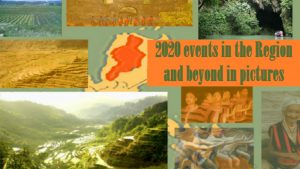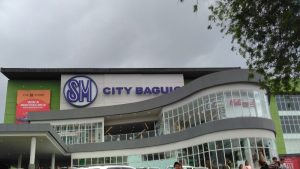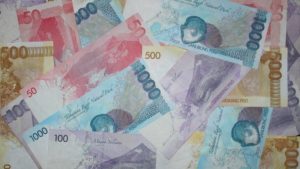Quietly in exhilaration these days, the tourism sector — long the bread-and-butter economic driver hereabouts — is gearing up excitedly to get the moribund tourism business going. Going into the 4th month of quarantine restrictions, Baguio seems well on the way to a revival of activities that can push tourism forward. Perhaps, not in the traditional, in-the-box, set of things that have been tourism’s brand of many decades ago. No choice there, given the health concerns that have rightfully been a dominant theme these days.
But why the exhilarating feeling? For one, the Tourism Promotions Board of the Department of Tourism has given the green light, about P6.8 million worth, for tourism promotions to push identified projects and activities that the Baguio Tourism Council can well execute, while transitioning into the New Normal.
If that isn’t much of a push, going forward, that’s still alright by any standard. After all, the transitional phase towards a tourism recovery will demand nothing less than scaled-down type of activities. Nothing of the crowd-drawing type where public space is required for congregations that simply have no place, when health protocols are still very much in place. Besides, while travelling from point-to-point remains sternly restricted to essential needs — leisure not being among these — tourism just couldn’t get substantially off the ground.
There is much of a sense why the brunt of activities lined up for the coming weeks is mainly on what can be portrayed on wifi-enabled portals. These are where pre-videotaped activities shall be purposely posted every now and then to serve as teasers for the leisure-starved travellers. These should serve well in keeping Baguio top in their list when the curtains of restrictions are finally lifted.
This time around, when the identified projects are launched in the next few days, muscled by a creative resurgence to get these out, there is expected a wave surging excitement up, enough for the city’s rejuvenated natural sights to mesmerize travellers into getting the first bus up here for another memorable sojourn. If a back-to-nature come-on won’t work — the breath-taking mountain landscape, the pine trees struggling to reach the skies, the flowering plants adorning roadsides — then culture and the arts become a value-added splendor.
In that aspect, Baguio has much to offer. No less than a United Nations entitlement of being the first Philippine city enrolled in the Creative Cities Network gives the city the enviable stature to be up there in the celestial consciousness. Getting immersed in the city’s creatively recognized crafts and folk arts, so intricately made to flourish in recent years, should bring in culture lovers any good time.
This is not all that any traveller into our midst can expect to find (for the first-timers), re-discover, or get to learn from after every memorable visit. Four months of covid-19 gave Mother Nature the time to heal from old, festering wounds inflicted on it in years of neglect.
Snapshots of our parks attest to the wonders that our natural environment make manifest day by day. It simply makes for a better than best demonstration how things from the earth have gone beyond the material into the ethereal. Good for the soul, battered as it has been from too much of viral strain in pernicious presence.
Re-branding Baguio tourism gives everyone the time to pause and ponder and purify what has been smudged in all the decades that saw the city go through the maelstrom of urban decay. This time, let’s not get back to what had been, grateful that the virulence of the past four months has made us re-think how to get back better than before.
While it may be a good and sound reality check, getting everything else other than public health and safety, in the back burner, it won’t ever make sense to disregard what tourism has meant in purely economic terms. It has to be argued from that platform of human needs, more than the human wants. It has to be seen from the vantage point of the cold cash ringing up cash registers.
For decades, Baguio tourism has been serving the city well by the per capita expenditures that every tourist shells out, in delirious enjoyment , each defining day of their stay. The bread-and-butter nomenclature speaks volumes that it’s not just your everyday retail operations that bring it in, yes, volumes.
Lest it’s being glossed over, it is tourism that has made Baguio not just a growing but a glowing community of kindred souls knit together by assets that tourists love to interact with — the natural environment that is unlike any other mountain haven, from whose bowels the cool, invigorating climes have developed.
Let it be re-stated: in recent years, nearly an average of a million tourists per year visit us, based on neatly arranged registry arrivals listed up in hotels, inns and lodging houses. At an average expense of P2,500 a day for an average stay of 2.5 days, the economic windfall of tourist expenditures during the festival and summer months comes up to a staggering P1.6 billion a year!
By any language, that kind of an expense translates into revenue for the city coffers, for government tax agencies, and not to forget, the tourist establishments where visitors have lodged up, had 3 meals a day, got their grooming needs serviced, and many other ancillary businesses they have patronized for sundry stuff.
And yet, despite the stellar contributions that tourism has ceded to the city, all that the holiday spenders get are the brickbats thrown at them at every turn. For all the garbage recklessly strewn in parks, along roads, and even in somebody’s front and backyard, it’s tourism’s fault.
For all the cars and other vehicular contraption carelessly brought into the city, jamming up roadways, ejecting toxic fumes that put the young ones and the once young into health peril, it’s tourism’s fault.
Rather than pushing for its revival in these continued challenging times, locals are even now pushing tourism out, out of the city’s borders, out from the window of opportunities whose economic worth can never equate to the irreversible damage to a uniquely growing and rejuvenating Baguio.
Indeed, in times like now, when economic needs remain subordinate to health and safety concerns, the cry against tourism — against accepting once more the influx of vacationers —may seem too much of an outcry. A P1.6 billion revenue accruing to every human need will certainly go a long way to resuscitate what appears to be an industry losing much of its life-force.
Balancing things off may well be right down the alley of tourism think-tankers, they in whose hands are entrusted the maturity to accept that in any revival, resiliency and recovery can only come about when regulations that come from government are coupled with initiatives that come from private stakeholders.
In a week or so, we’d know how consecrated is the will to do things the right way, rather than simply sliding back to where we were four months back.
You might also like:





















